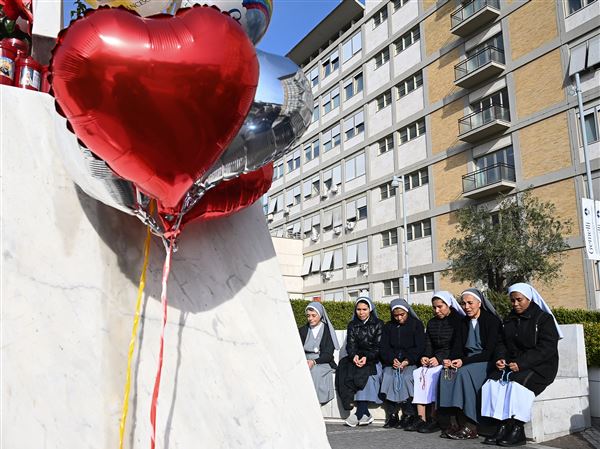When Steven Gray was diagnosed with terminal Stage IV pancreatic cancer in 2012, he received treatment at both Johns Hopkins Hospital in Baltimore and UPMC Passavant near his Butler home. The family was fortunate, said his wife, Patty Cudoc-Gray, because their insurance covered all but the $20 co-payments for each visit.
But when she later examined the Explanation of Benefits records sent by Pittsburgh insurer Highmark, she could hardly believe what she saw:
For Mr. Gray's last round of outpatient chemo at Johns Hopkins on Jan. 10, 2013 -- including medications, IV therapy, supplies and pharmacy service -- the hospital charged $2,544.65 and was paid $2,493.06 by Highmark.
Two weeks later, for the same procedure and ancillaries, UPMC Passavant charged $13,789.75 and Highmark paid $7,704.40.
Looking at the line item charges for standard chemotherapy drugs, she later learned that Highmark paid Johns Hopkins $761.40 for 1 milligram of Docetaxel. For the same dose of the same drug, UPMC got $2,542.50.
Another example: For a 200 mg Gemcitabine injection, Hopkins collected $143.10. UPMC got $1,051. "I said, 'How can they charge five times the amount [as Johns Hopkins] and collect three times the amount?' " asked Ms. Cudoc-Gray.
UPMC spokeswoman Jennifer Yates couldn't address the specifics of Mr. Gray's treatment, "It's difficult to comment on this case without knowing or having permission to talk about the patient's specific circumstances." But she added, "We are paid the rates under the negotiated contracts we have with Highmark and we can't comment on how that compares to other institutions."
Gerard Anderson, director for the Center for Hospital Finance and Management at the Johns Hopkins Bloomberg School of Public Health in Baltimore, thinks he knows why UPMC charges more.
"Basically the answer is simple: Because they can," he said. "There is nobody telling them how much they can charge and so they charge as much as they can get."
In May, the U.S. Centers for Medicare and Medicaid Services released data that showed wide variation in what local hospitals charge.
To implant a pacemaker, for example, Heritage Valley Sewickley had an average charge of $22,365, while St. Clair Hospital in Mt. Lebanon charged $41,345, Allegheny General Hospital charged an average of $56,364 and UPMC Presbyterian-Shadyside charged $89,793.
UPMC can set its charges higher because it is one of the "dozens and dozens" of what are essentially local provider monopolies, said health policy expert Robert A. Berenson at the Urban Institute in Washington, D.C. "They are a 'must-have.' A health plan cannot go to market without it. That gives them enormous leverage on pricing."
At Johns Hopkins, Maryland's statewide regulation of inpatient hospital rates -- the only state to do so -- may keep prices lower, said Harold Miller, president of the Center for Healthcare Quality and Payment Reform in Pittsburgh. "But they've only recently started to deal with outpatient care."
Nonetheless, marking up chemotherapy drugs "is a major source of revenue for oncology services, and in many cases, the markup is negotiated on a very high rate by large health systems or large oncology practices," said Mr. Miller, who is also an adjunct professor of public policy and management at Carnegie Mellon University and a columnist for the Post-Gazette.
For the "true" price, he pointed to Medicare payments, which are based on the average sales price plus 6 percent. For the drugs that Mr. Gray received, he said, the Medicare-approved payment -- excluding charges for the infusion and related services -- was $7.96 for 200 milligrams of Gemcitabine and $4.63 for a one-milligram infusion of Docetaxel.
Mr. Anderson said the Grays' experience illustrates the ills of the current health care payment system, which outside of Medicare sets no limits on what a hospital can charge -- even as it keeps those charges hidden from the consumers who end up paying higher insurance premiums.
Ms. Cudoc-Gray "had no idea about the relative costs prior to going to both places," said Mr. Anderson. "And she couldn't have because the prices are unknown. They're a secret."
Ms. Cudoc-Gray said she discovered the disparity in charges and payments after receiving a letter from Highmark in March 2013 saying radiation treatments for her husband had been authorized for the previous year. The first treatment had been scheduled for June 14, 2012, she said, the same day the Grays were traveling to Baltimore after learning about a Johns Hopkins clinical trial.
Knowing her husband never received the treatments, she went on Highmark's website and found that UPMC Shadyside had charged the insurer $15,000 for ongoing radiation treatments that had been authorized but never given. "I had no reason to look at them prior to that."
She has documents showing that the radiation treatments were canceled but, nearly two years later, she said a partial payment from Highmark to UPMC Shadyside is still considered under dispute.
Both Johns Hopkins and the University of Pittsburgh Cancer Institute are designated Comprehensive Cancer Centers by the National Cancer Institute. While Highmark's Allegheny Health Network recently announced a collaborative affiliation with the Johns Hopkins Sidney Kimmel Cancer Center, AHN officials said few local patients would be treated at the Baltimore facility under that arrangement.
"This case highlights the problem of vast differences in costs and payments for medical care," said Highmark spokesman Aaron Billger. "In this particular example, we don't believe anyone would claim the care at UPMC is better or technically different than at Johns Hopkins."
While no hospital is cheap, "Hopkins tends to be on the low end of most price indicators and UPMC tends to be at the very high end of the indicators," said Mr. Anderson, who helped develop the Medicare prospective payment legislation while working at the U.S. Department of Health and Human Services.
Last month, a report by National Nurses United nurses union said UPMC Presbyterian-Shadyside's charges were more than eight times its costs, the 40th highest among U.S. hospitals. Johns Hopkins "would be among the lowest in the nation" among the more than 4,300 hospitals reviewed, said National Nurses United spokesman Chuck Idelson.
UPMC noted at the time that most people don't pay the charge amounts -- Medicare sets its rates, commercial insurers contract payment rates and those without insurance usually are eligible for some financial assistance.
While that may be true, Mr. Anderson said that still leaves a flawed payment system that allows hospitals to list whatever charges they want while the consumer is largely left in the dark. There are attempts to address that, he said, notably an approach known as "reference pricing" that has been adopted by the California Public Employees Retirement System or CalPERS. With that approach, the patient chooses between a lower-price provider at little or no out-of-pocket expense, or seeks care at a more expensive hospital and pays the difference.
In June, CalPERS officials said they saved $5.5 million over two years on hip and knee replacement surgeries by directing enrollees to hospitals that had agreed to charge less than $30,000 for the procedure; they also saw lower 30-day infection and complication rates. Those who went elsewhere faced a $3,000 cost sharing fee, plus the difference between the CalPERS contribution and the price.
Although Ms. Cudoc-Gray said her family's comprehensive medical coverage insulated them from the cost of her husband's care until his death in August, she was deeply moved by the other families she met during their many medical appointments, many of whom were struggling to pay their medical bills.
"I can't imagine the financial hardship that some people experience trying to pay for chemotherapy and it's a matter of life and death. What are they going to do?"
First Published: February 16, 2014, 3:42 a.m.
















